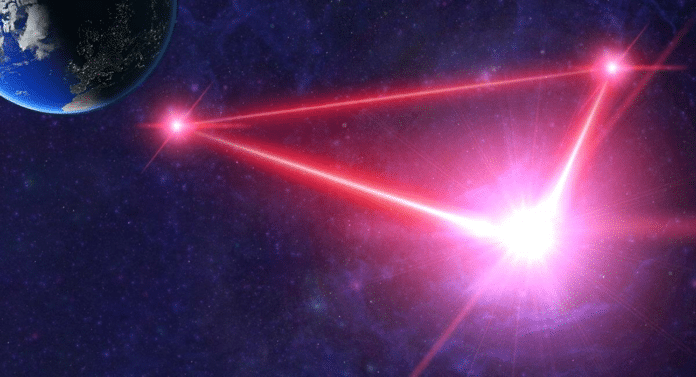The stochastic gravitational-wave background (SGWB) is a diffuse gravitational-wave signal resulting from the superposition of numerous unresolved sources. The two main obstacles to the detection of the SGWB anisotropies are the poor angular resolution of gravitational-wave detectors to a diffuse SGWB mapping and the presence of a considerable shot-noise contribution. The former issue is mainly related to the noise properties of the detector and how they project onto the sky.
A new SISSA study proposes an array of interferometers in space to detect subtle fluctuations in the background gravitational signal that may reveal the secrets of black hole mergers. Using a constellation of three or four space interferometers, scientists are about to map the flat and almost perfectly homogeneous background in a search for ripples.
Scientists refer to these small fluctuations as anisotropies and contain the data required to comprehend the dispersion of gravitational wave sources on the grandest cosmological scale.
Giulia Capurri, a SISSA Ph.D. student and first author of the study, said, “Measuring these background fluctuations, known more correctly as anisotropies will, however, continue to be extremely difficult, as identifying them requires a very high level of angular resolution not possessed by current and next generation survey instruments.”
A “constellation” of three or four space interferometers placed in solar orbit and spanning an area roughly equal to the distance between the Earth and the Sun could solve this problem. The ability of interferometers to distinguish gravitational wave sources improves with increasing separation due to improved angular resolution.
Capurri said, “A constellation of space interferometers orbiting the Sun could enable us to see subtle fluctuations in the gravitational background signal, thus allowing us to extract valuable information about the distribution of black holes, neutron stars and all other sources of gravitational waves in the universe.”
Carlo Baccigalupi, professor of theoretical cosmology at SISSA, said, “Following the success of the LISA project’s space mission test, there are currently two proposals for the creation of space-based interferometer constellations: one European – the Big Bang Observatory (BBO), and one Japanese – the Deci-hertz Interferometer Gravitational-wave Observatory (DECIGO).”
“This represents one of the earliest works to provide specific predictions of the size of the stochastic background of gravitational waves by a constellation of instruments orbiting the Sun. Together with further similar projects whose details will be published in due course, they will be crucial for developing an optimal design for future observational instruments that we hope will be built and commissioned in the coming decades.”
Journal Reference:
- Giulia Capurri, Andrea Lapi, Lumen Boco and Carlo Baccigalupi. Searching for Anisotropic Stochastic Gravitational-wave Backgrounds with Constellations of Space-based Interferometers. The Astrophysical Journal. DOI 10.3847/1538-4357/acaaa3
